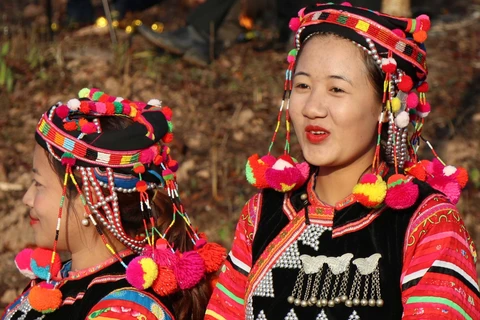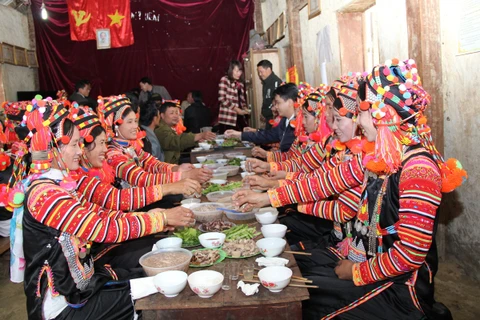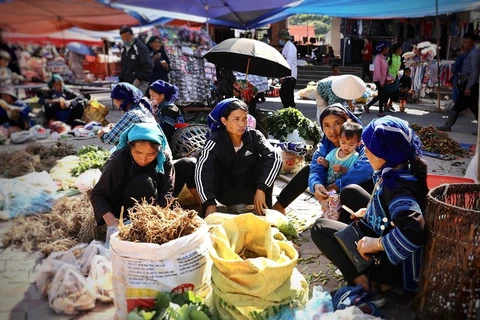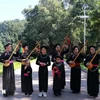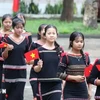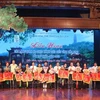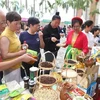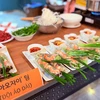Hanoi (VNA) – The ‘Ga ma thu’ ceremony is the Ha Nhi ethnic group’s biggest and most important ceremony of the year. It is held in spring to pay respect to the ancestors, give thanks to heaven and earth, and pray for a good harvest in the new year.
Each year, the Ha Nhi people in Muong Nhe district in the northern border province of Dien Bien celebrate many festivals. The ‘Ga ma thu’ (an offering to the village) is the most important ceremony of the year and includes the participation of the whole community.
The spring ceremony is held as wildflowers are in bloom, aiming to pay respect to their ancestors who founded and protected the Muong village. It is also an opportunity to express gratitude to heaven and earth, and supernatural beings who have blessed local people with good health, good business and a new year of favourable weather, bountiful crops, and happy family. At the same time, it is an opportunity for everyone to rest, have fun and celebrate the new season.
Ha Nhi people in different localities choose the date of the ceremony according to different Ha Nhi calendars. The Ha Nhi La Mi people choose the day of the tiger while the Ha Nhi Co Cho choose the day of the goat, and there are other variations of festival dates.
According to the custom, the ceremony is held over three days with two main parts of ritual and performance, and folk games.
During the ceremony, the villagers must stop working in the fields and must celebrate together in solidarity. There is a ban on eating wild animals, as well as trapping subterranean vermin such as squirrels or hedgehogs, so as to avoid causing risks to the villagers.
The shamans on those days must keep themselves clean. There will be one main shaman (called A po mi cu), six support shaman, and one assistant to the main shaman (la cha). Only the main shaman is chosen by the villagers in advance. He must abstain from eating green vegetables, and keep a distance from women before and after performing the ceremony (equivalent to 12 days, according to the calculation of Ha Nhi people).
In the past, Ha Nhi women were not allowed to participate in or go near the location of the ceremony. Today they are allowed to participate in the preparation of offerings and the meal to celebrate the success of the ceremony.
The shamans perform rituals with seven offerings, to the head of the village, the gate of the village, the god of water, the god of fire, the god of the earth, the god of the forest and the god of wind. All offerings include living animals and cooked food. Of note, the 8th offering tray, dedicated to the spirits, is only prepared once every three years.
The central worshiping ceremony (top of the village) is performed by the main shaman to pray for good health and good harvest for the villagers.
When the ceremony ends, the offerings in the tray will be divided equally among the households in the village. The head of the family is the one who prepares and offers them to the ancestors and prays for good health and fortune for children and grandchildren.
The ceremony serves the spiritual needs of the community, praying for the protection of the gods and ancestors for a prosperous, peaceful and happy life. The worship also dispels worries and sorrows in life, and at the same time teaches children to be grateful and respect the gods and ancestors who founded and protected the Muong village.
The Ga ma thu ceremony contributes to the conservation and promotion of traditional cultural values as well as strengthens the great national solidarity.
Recognising its importance, the ceremony has been named in the list of national intangible cultural heritage by the Minister of Culture, Sports and Tourism in accordance with Decision No. 446/QD-BVHTTDL dated January 29, 2019./.



